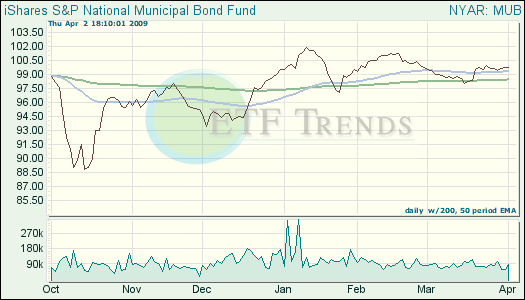The pros and cons of bond ETFs
Post on: 26 Июнь, 2015 No Comment

Highlights
- An ETF tracks a market, sector or index but can be traded like a stock.
- If you must stay liquid, short-term bond ETFs may not be right for you.
- Some ETFs hold lower-quality bonds and others use leveraging.
Are you a yield chaser?
If so, you’ve probably noticed short-term bond exchange-traded funds, or ETFs, are where some people are parking their money.
An ETF tracks a market, sector or index but can be traded like a stock. Like money market funds. these ETFs typically invest in high-quality, short-term securities like Treasuries. But there are some noteworthy differences. You can lose principal, and the funds aren’t insured by the Federal Deposit Insurance Corp.

That’s not all. Most of these ETFs are new kids on the block — usually only a few years old — and don’t have substantial track records yet. More ETFs are reportedly in the pipeline.
The upshot: Be careful that you don’t trade investing safety for slightly higher yields.
These ETFs are a new concept, says Pete Crane, president of Crane Data of Westborough, Mass. But nothing substitutes for money markets (as safe investments). There’s no free yield.
If you must stay liquid, short-term bond ETFs may not be right for you. But if you’re adding income to a structured portfolio and can tolerate modest losses, they’re appropriate, Crane says.
Typically, this brand of ETF holds ultra short-term bonds with maturities usually from one to three months. But they can be up to one year. The best ones combine high-quality bonds from well-known brand names. They include offerings from big ETF-fund companies such as iShares in Jersey City, N.J. PIMCO in Newport Beach, Calif. and State Street Corp. in Boston.
Expense ratios, which can drag down returns, vary widely. For example, the iShares Barclays Short Treasury Bond Fund mirrors the Barclays Capital U.S. Short Treasury Bond Index. Much of its almost $4 billion in assets are parked in Treasuries. But its expense ratio, which measures fund-operating expenses annually, is only 0.15 percent. Conversely, the PIMCO Enhanced Short Maturity Strategy Fund has a 0.35 percent expense ratio.
Another ETF, the SPDR Barclays Capital 1-3 month T-Bill ETF, has a 0.13 percent expense ratio. It’s lower than money markets, on average, says Tom Anderson, global head of ETF strategy and research at State Street Global Advisors in Boston.
Here are the pros and cons to consider before making a leap into bond ETFs.
The pros:
- They are highly liquid. Since ETFs trade like stocks, you can sell them to move into a cash position any time during the day. The ETF is always open, says Crane, adding that it’s an advantage for heavy day traders who are quickly in and out of stocks.
- You have lots of options. Short-term ETFs run the gamut from low-risk Treasuries to high-yield bonds. Some ETFs, such as the WisdomTree Dreyfus Euro Fund and WisdomTree Dreyfus Chinese Yuan Fund, invest in foreign currencies.














